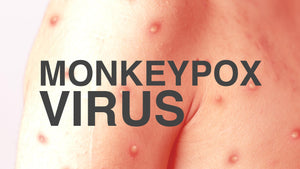
Learn all about the process of Blood Donation
Blood donation saves lives. Undoubtedly, it is one of the most precious gifts one can give another.
Blood consists of liquid and solids. The liquid part, called plasma, is made of water, salts, and protein. Over half of blood is plasma. The solid part of blood contains red blood cells, white blood cells, and platelets.
Blood is a living tissue with numerous functions like:
- Delivering oxygen and nutrients to the organs, fighting infections, and creating blood clots that prevent bleeding excessively when a blood vessel is damaged.
- The liquid part of blood, called plasma, is key for maintaining blood pressure and supplying critical proteins for blood clotting, immunity, and maintaining the correct pH balance in the body -- making it essential for cell function.
- Plasma also carries the solid part of our blood - white blood cells, which work to destroy viruses and bacteria; red blood cells, which carry oxygen through the body; and platelets, which help clotting.
When one donates the blood, he/she/they is/are known as donors. Before donating blood, a mini medical test is conducted to check if the donor is healthy or eligible to donate the blood. Questions about drug intake, chronic disorders, tattoos and diet are primarily asked, followed by conduction of haemoglobin and blood group tests.
The procedure begins if the donor is eligible for the blood donation. Generally, it is a 30 min process. Firstly, the donor is asked to lie down and relax on the bed. The technician injects the donor’s vein using a sterile and fresh needle. Almost a pint of blood is collected. During the process, the donor is given a sponge ball to squeeze. It helps with circulation and relaxes the donor.
After the blood collection, the donor is asked to lie down and rest for a couple of minutes. Snacks and beverages containing glucose are provided to the donor and kept under observation for 10-20 mins.
The donor also receives a card or certificate of appreciation for donating the blood.
Once the blood is collected, it undergoes rigorous testing in the lab, where the blood is tested for any abnormalities. In the centre, the white blood cells are filtered out of each donation. Each blood donation is broken down into its separate component using a centrifuge. Red blood cells, plasma, or platelets are extracted using specialised machines.
All the different components are sent to their specific holding areas, where they will be quarantined until all the required testing is completed.
At the same time, the samples get tested in the lab. Each donation is tested to find the donor’s blood group and compared against your records to know if you’ve donated before. The donations are also checked for viruses to help ensure that each donation is safe to transfuse to patients.
Once all the testing is complete and passed, each pack of blood can be labelled and placed into controlled storage, ready to be sent to hospitals.
Numerous myths are stopping people from donating blood. Like older people cannot donate blood, blood donation hurts, but it must be known that blood donation is safe and can save lives.
You can explore a wide range of swabs, needles, vacutainers and various other supplies on: https://www.smartmedicalbuyer.com/collections/needles-syringes
https://www.smartmedicalbuyer.com/collections/wound-care-dressings







